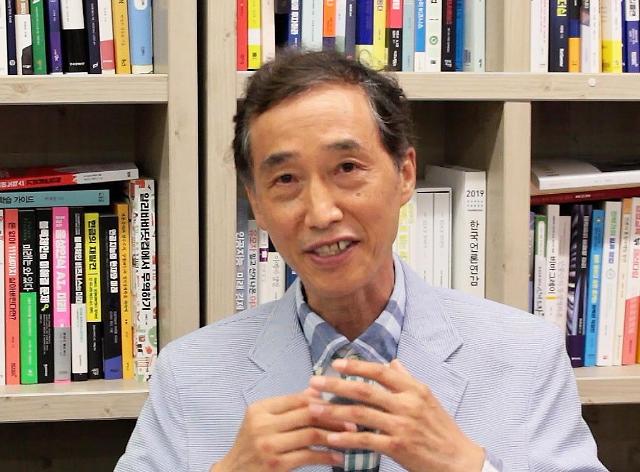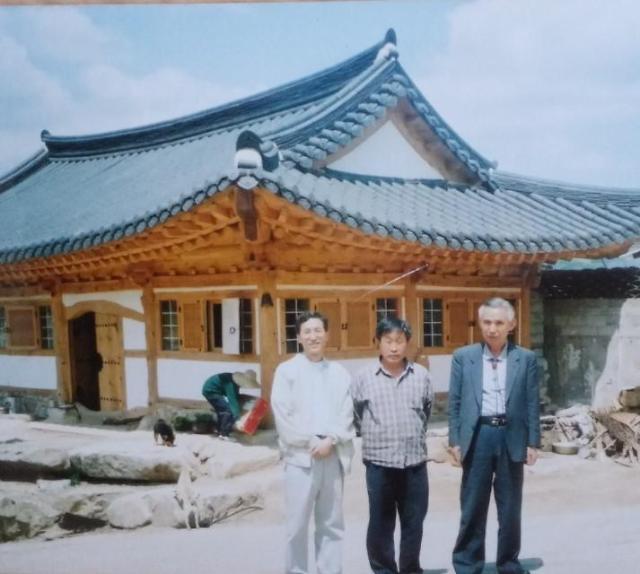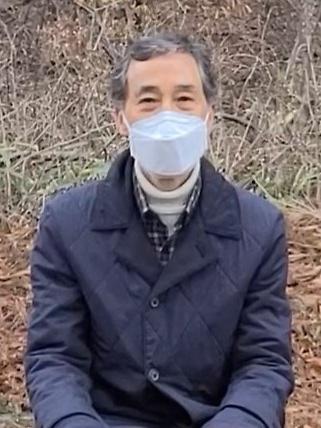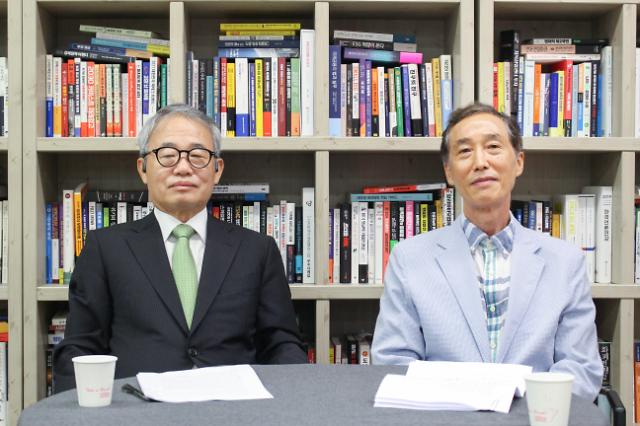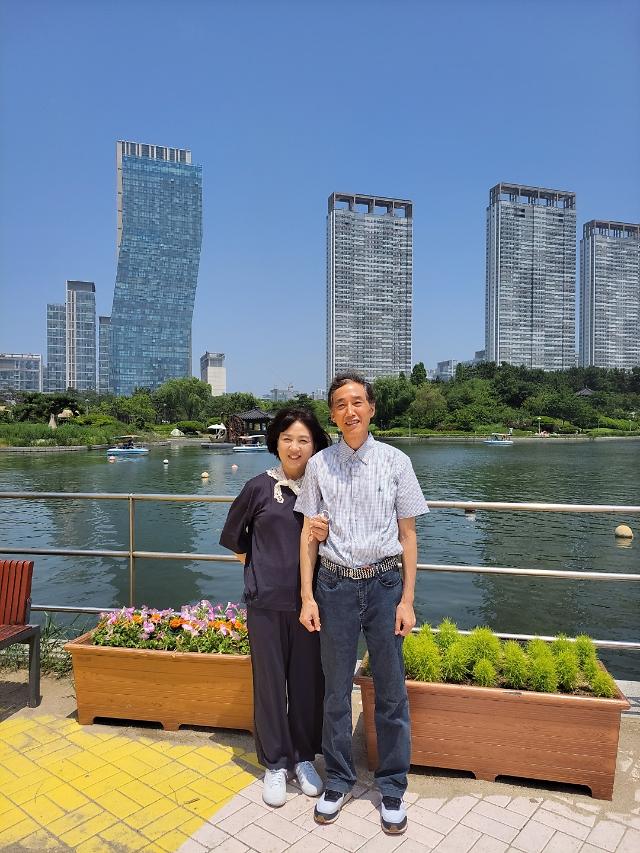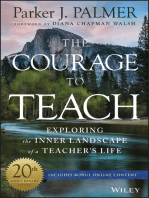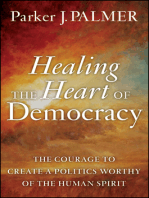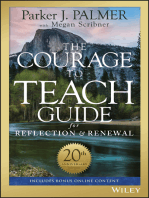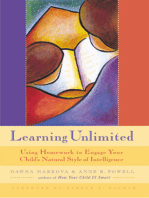The Discoverers: A History of Man's Search to Know His World and Himself Audible Logo Audible Audiobook – Abridged
Daniel J. Boorstin (Author), & 2 more
4.7 out of 5 stars 353 ratings
See all formats and editions
Audible Logo Audiobook
1 Credit
Hardcover
$62.37
2 Used from $13.32
4 New from $62.37
The Discoverers is a vivid, sweeping and original history of man's greatest adventure: his search to discover the world around him - the relationship of the heavens to his own planet, the elusive and mysterious dimension of time, the vast and colorful range of plants and animals, the intricate workings of his own body, the surprising variety of human societies past and present. Boorstin's flair for the vivid anecdote, for fresh points of view, and for the dramatic relationship of ideas has made him the most readable of our eminent historians.
The story of our world is not the usual succession of battles and empires and political leaders, but a tale of discoveries and beginnings. The long human quest for what man does not yet know becomes a mystery story played by a vast cast on an ever-changing stage. The heroes of this saga are men with an insatiable hunger for knowledge and the courage to venture into the unknown.
Why didn't the Chinese discover America? Why were people so slow to learn the earth goes around the sun? How and why did we begin to think of "species" of plants and animals? How, when, and why did people begin digging in the earth to learn about the past? How did the study of economics begin? These are but a few of the fascinating questions answered by Dr. Boorstin, Librarian of Congress Emeritus.
Read less
©1983 Daniel J. Boorstin (P)1994 The Publishing Mills
Listening Length
5 hours and 26 minutes
Author
Daniel J. Boorstin
Next page
Buy with Audible Credit1 Credit
You have 2 Audible Credits
Buy with Audible Credit
By redeeming your credit, you agree to Audible's Conditions of Use.
Pay with 1-Click$14.95
Sold and delivered by Audible, an Amazon company
Add to Wish List
Related to this topicPage 1 of 12Page 1 of 12
Previous page
The Ink Black Heart
The Ink Black HeartThe Ink Black Heart
Robert Galbraith
290
#1 Best Seller in Women Sleuth Mysteries
Audible Audiobook
1 Credit
Phosphorescence: On Awe, Wonder & Things That Sustain You When The World Goes Dark
Phosphorescence: On Awe, Wonder & Things That Sustain You When The World Goes DarkPhosphorescence: On Awe, Wonder & Things That Sustain You Whe…
Julia Baird
719
#1 Best Seller in Audible Books & Originals
Audible Audiobook
1 Credit
Atomic Habits: An Easy and Proven Way to Build Good Habits and Break Bad Ones
Atomic Habits: An Easy and Proven Way to Build Good Habits and Break Bad OnesAtomic Habits: An Easy and Proven Way to Build Good Habits and Break…
James Clear
56,846
#1 Best Seller in Stress Management
Audible Audiobook
1 Credit
I'm Glad My Mom Died
I'm Glad My Mom DiedI'm Glad My Mom Died
Jennette McCurdy
8,396
#1 Best Seller in Biographies of Actors & Entertainers
Audible Audiobook
1 Credit
Where the Crawdads Sing
Where the Crawdads SingWhere the Crawdads Sing
Delia Owens
326,617
#1 Best Seller in Literary Fiction
Audible Audiobook
1 Credit
Next page
Product details
Listening Length 5 hours and 26 minutes
Author Daniel J. Boorstin
Narrator Christopher Cazenove
Audible.com.au Release Date 15 March 2002
Publisher The Publishing Mills
Program Type Audiobook
Version Abridged
Language English
ASIN B00NPBSJ04
Best Sellers Rank 73,786 in Audible Books & Originals (See Top 100 in Audible Books & Originals)
747 in World History (Audible Books & Originals)
2,022 in Social Sciences (Audible Books & Originals)
5,088 in World History (Books)
Customer reviews
4.7 out of 5 stars
4.7 out of 5
353 global ratings
5 star
81%
4 star
13%
3 star
4%
2 star
1%
1 star
1%
How are ratings calculated?
Review this product
Share your thoughts with other customers
Write a customer review
Sponsored
Top reviews
Top reviews
Top reviews from Australia
There are 0 reviews and 0 ratings from Australia
Top reviews from other countries
Aurelius Intel
5.0 out of 5 stars Knowledge...
Reviewed in the United Kingdom on 26 February 2018
Verified Purchase
Came quick, brilliant book!
Customer image
Report abuse
fernando saravia
5.0 out of 5 stars Five Stars
Reviewed in the United Kingdom on 15 October 2017
Verified Purchase
one of my favorites all time
Report abuse
Andry Anthias
4.0 out of 5 stars Four Stars
Reviewed in the United Kingdom on 11 December 2014
Verified Purchase
A good copy but no dust jacket. Thank you.
Report abuse
Amazon Customer
5.0 out of 5 stars A Great Read
Reviewed in the United Kingdom on 27 July 2016
Verified Purchase
I love it. It's written in a way that most people should be able to understand the language used.It's a fountain of knowledge and intriguing. Highly recommended for people who want to broaden their knowledge.
Report abuse
Mike Kelly
5.0 out of 5 stars Fascinating, just so interesting
Reviewed in Canada on 24 July 2021
Verified Purchase
I love this book. The voyage through the history of fundemental discovery is packed with interesting intrigues, serendipity, and lost victories. I've sent copies to two of my more curious pals.
Report abuse
arch to Know His World and Himself
(Knowledge Trilogy #1)
by Daniel J. Boorstin
4.12 · Rating details · 11,360 ratings · 344 reviews
An original history of man's greatest adventure: his search to discover the world around him. (less)
GET A COPY
KoboOnline Stores ▾Book Links ▾
Paperback, 745 pages
Published February 12th 1985 by Vintage (first published 1983)
Original TitleThe Discoverers: A History of Man's Search to Know His World and Himself
ISBN0394726251 (ISBN13: 9780394726250)
Edition LanguageEnglish
SeriesKnowledge Trilogy #1
Other Editions (30)
The Discoverers: A History of Man's Search to Know His World and Himself
The Discoverers
Những nhà khám phá - Lịch sử tri kiến vạn vật và con người
Los descubridores
The Discoverers
All Editions
...Less DetailEdit Details
EditMY ACTIVITY
Review of ISBN 9780394726250
Rating
1 of 5 stars2 of 5 stars3 of 5 stars4 of 5 stars5 of 5 stars
Shelves to-read edit
( 1796th )
Format Paperback edit
Status
September 2, 2022 – Shelved as: to-read
September 2, 2022 – Shelved
Review Write a review
comment
FRIEND REVIEWS
Recommend This Book None of your friends have reviewed this book yet.
READER Q&A
Ask the Goodreads community a question about The Discoverers
54355902. uy100 cr1,0,100,100
Ask anything about the book
Recent Questions
why are pseudomathematical studies like geometria, cartomancy and casting hexagrams not considered true math?
Like 3 Years Ago Add Your Answer
See 1 question about The Discoverers…
LISTS WITH THIS BOOK
John Adams by David McCulloughThe Rise and Fall of the Third Reich by William L. Shirer1776 by David McCulloughTeam of Rivals by Doris Kearns GoodwinThe Guns of August by Barbara W. Tuchman
Best History Books
3,284 books — 3,424 voters
Einstein by Walter IsaacsonGenius by James GleickThe Structure of Scientific Revolutions by Thomas S. KuhnSurely You're Joking, Mr. Feynman/What Do You Care What Other... by Richard P. FeynmanTesla by Margaret Cheney
Scientists and Philosophers
229 books — 168 voters
More lists with this book...
COMMUNITY REVIEWS
Showing 1-30
Average rating4.12 · Rating details · 11,360 ratings · 344 reviews
Search review text
English (312)
More filters | Sort order
Sejin,
Sejin, start your review of The Discoverers: A History of Man's Search to Know His World and Himself
Write a review
Fergus
Nov 30, 2020Fergus rated it liked it
Life can be so Monstrously Problematic. But humankind is an inveterate problem-solver.
The ‘solutions’ of the Discoverers, however, have now opened yet new ethical aporias. Cans of worms.
Some are unforgivable, but our future discoveries may assuage the pain we feel over them, God willing… and so it goes.
This is quite a fine book about the Age of Discovery.
My Dad sent it to me one Christmas around 1983, when it first appeared. He had come to understand, I think, that in my own dumb way I was a SEEKER rather than a DOER - and so he wanted to feed my heuristic seeking. So I could find my answers.
All well and good - and it is a superb and factual book - but I wasn’t looking for FACTS. I was seeking answers to my own persistent questions.
At that time, a middle manager, I didn’t fit into a management mold. I was a dreamer.
And my questions were many. How could I be accepted for myself? What can I do to show my coworkers that my own way was viable? And, if the answers remained negative - and their brick wall to my questioning persisted - how could I change myself?
Of course, the only really constructive question of those three was the last.
I had to change - by finding a Bigger Container for my questions - and, once that container was reified, fit INTO that larger mold in my everyday actions.
And that’s exactly what happened. I needed more elbow room - as do all we present or former nine-to-fivers - real room to FREELY BE A REAL PERSON.
I found that elbow room in my growing compassion and faith, having visualized those concrete options in meditation as the only viable ones.
I had to be myself and not WORRY what others thought.
But I HAD to also be a hopeful, positive person.
And, you know, if you dream Real Dreams you can make them happen.
Reification is Key.
Now, of course, this whole story for me is ancient history...
But after joining GR in 2017 I saw legions of younger folks wrestling with similar problems. Problems of Identity and Character; questions about finding real Meaning in our Life and Putting it to Work for Ourself.
So I decided to join in & add my two cents’ worth -
In your dreams and your reading you have the key.
And you know you CAN find the answers you’re looking for.
You’re fully armed:
And NOW, unlike the historical period of The Discoverers -
Your own Discoveries will never end. (less)
flag83 likes · Like · see review
Charles Moody
Oct 26, 2012Charles Moody rated it it was amazing
If you were going on a yearlong cruise and could take only one book, this might be my recommendation. I cannot imagine where else you could find, in a single volume, such a wealth of history organized so lucidly and written so engagingly. The title might suggest that it is the story of Columbus, Magellan, etc., and in part it is, but it is far more. It describes the step-by-step advances in human knowledge in many areas, as societies began to measure time, became determined to explore and map the earth and seas, sought to catalog nature, encountered the need to record and transmit knowledge, and eventually recognized the importance of excavating and studying their own past. Even discoveries I thought I knew about became, in Boorstin’s telling, new and thrilling, because he so vividly explains and recaptures the illusions against which the particular discoverer was contending.
The book is divided into wonderfully concise chapters of about 5-8 pages, and in almost every one of them I became instantly interested in the protagonist, and awed by the courage or brilliance of his discovery. In a good number of them I either found the answer to some question I had always wondered about, or found intriguing discussion of something it had never really occurred to me to wonder about -- such as why there are seven days in a week, when nothing in nature dictates it. In whole or in parts, this book can be read and reread almost endlessly. (less)
flag42 likes · Like · 3 comments · see review
Todd N
Jun 10, 2009Todd N rated it it was amazing
It took me about six weeks to read this book because I wanted to take my time with it.
The Discoverers is a history of our attempt to understand the world and our place in it. This story of science and exploration is divided into these four books:
1. Time - how attempts to measure hours and years led to examination of the sky and development of increasingly complex machines
2. The Earth And The Seas - exploration of the globe over land and sea; the discovery of New World
3. Nature - Copernican system; telescope and microscope; medicine; The Royal Society; Newtonian physics
4. Society - Books, manuscript and printed; History, prehistory, and archeology; Economics and sociology; Post-Newtonian physics from atoms to electromagnetism
The Discoverers covers a lot of different topics, but they are arranged in a way that the concepts and events build throughout the book. For example, long ocean voyages aren't practical until the clock is perfected. Also, a theory of evolution isn't possible until geology extends the age of the Earth far beyond the traditional age of a few thousand years.
The focus is mainly on The West, meaning Europe and America, but there are also sections explaining how other cultures (mainly China and Islam) were an influence on events or why what was happening in the West wasn't happening there. I just noticed that this book was published in 1983, which I think is before the emphasis on multiculturalism was mainstream, so it might disappoint (or even offend the more delicate) people who expect a more multicultural and global focus from a historical overview.
So much is covered in this book that it would be impossible to summarize. The stories that I was already familiar with -- Newton, Galileo, Darwin -- are already covered here. More interesting are the lesser known or even anonymous people who worked to illuminate our world. Looking back on this book, I noticed three interesting themes.
1. Being right isn't really necessary to push back the frontiers of knowledge. Columbus didn't understand what he discovered. Newton spent the last years of his life trying to create a chronology for the events in antiquity, including Greek legends. He wasn't successful, but his idea of using astronomy to date events eventually led to a chronology being created. Schliemann didn't find the city of Troy or Agamemnon's grave, but dramatic reports of his attempts almost singlehandedly popularized the new field of archeology.
2. The biggest obstacle to knowledge in a field is not ignorance but the existence of an already widely held understanding in that field. The influence of the ancient Greek physician Galen on anatomy is the most striking example. It turns out that Galen based his anatomy on inferences drawn from dissection of monkeys because dissection of human cadavers was forbidden. But his texts were authoritative for over fourteen centuries. Ptolemy has a similar influence on cartography and astronomy. Aristotle, of course, influences just about everything else. And then of course there is The Church. Even when not actively blocking progress, it still provides such a complete structure for the mind that it is almost like a mental prison that very few are able to escape from.
3. Lack of formal education doesn't preclude one from making significant contributions. It may even be advantageous to be an outsider. Paraclesus, who laid the foundation for disease theory, didn't have a medical degree. Faraday's insights into electromagnetism were probably possible because he wasn't formally trained in the math of Newtonian physics. Thomsen's was able to discern separate Stone, Iron, and Bronze ages because his mind wasn't influenced by the inaccurate academic theories of the day. However, everyone mentioned in the book -- credentialed or not -- read and worked constantly.
I was also happy to finally learn the name for the mythical creatures who had faces in their abdomens: Blemmyae. I saw an illustration of one of these a long time ago in a history book but was unable to find a picture again. But now I have twenty or so drawings to use as an avatar.
If you are curious about how we know what we know I would recommend reading this book.
(less)
flag18 likes · Like · 1 comment · see review
Max
Jul 11, 2016Max rated it it was amazing
Shelves: world-history
This theme based history of how the modern world came to be is so much more engaging than the typical geopolitical event based history. Rather than learning about battles, kings and politicians we learn how ideas pursued by innovators shaped our culture. Boorstin shows us how these creative thinkers were helped or more often held back by political, religious and cultural forces and in turn how their ideas changed these forces. This wide ranging book begins with man’s first discovery, time, and from there goes on to man’s discovery of the earth, nature and the functioning of human society. Boorstin takes us right up to the start of the twentieth century and along the way treats us to captivating vignettes of visionaries who radically altered our perceptions, many of whom I learned about for the first time or in a new way. The notes below touch on some of the topics I found most interesting.
Since the dawn of civilization, man has depended on his understanding of the seasons. Boorstin takes us from the first primitive calendars to the invention of the mechanical clock in the 14th century. Now people could live from hour to hour. This also led to the idea of a clockwork universe. With the 17th century invention of the pendulum clock we could live from minute to minute. The 18th century invention of the chronometer which kept accurate time on pitching and rolling ships meant longitude could be accurately calculated. Now we knew where we were even in the middle of the ocean. The first steps on the path to our current hectic lives had been taken.
In the second century the great Ptolemy provided the first scientific maps of the known world even estimating the earth’s circumference and the Asian landmass. He underestimated the circumference by 15% and extended Asia way too far east which would delude Columbus when Ptolemy’s geography reappeared in the West in the fifteenth century. With the Middle Ages came maps that relied on myths and bible references rather than ancient knowledge or actual experience. Thus in Christian Europe exploration beyond known bounds was considered dangerous as some evil would be lurking. Boorstin points out, “The great obstacle to discovering the shape of the earth, the continents, and the ocean was not ignorance but the illusion of knowledge.” As he notes, “More appealing than knowledge itself is the feeling of knowing.” Christian Europe was in the Great Interruption lasting from the fourth to the fourteenth century.
The Mongols opened the West’s eyes to the East in the thirteenth century. When their empire faded, the Turks and Arabs blocked the way. Thus Europe was shut out of Asian trade until the Portuguese in the fifteenth century found their way around Africa launching the age of discovery. The Portuguese efforts were methodical whereas Columbus’ voyage was a crapshoot. Grossly underestimating the distance to Asia, he was lucky America was there. Columbus never got past the prevailing religious, mythical and Ptolemaic preconceptions about the earth’s geography. After many voyages to the New World he never recognized it as such, still thinking he had found islands off the Asian coast. Amerigo Vespucci who explored most of the east coast of South America, did realize he had found a fourth continent and documented it. He not only saw through the errors of current maps but noted the vast numbers of new species. He reasoned that Noah could not have gotten them all on the ark becoming a heretic. After Amerigo Vespucci’s early death from malaria, a subsequent map independently published based on his notes named the continent after him.
Just as with the discovery of new lands, the discovery of the macro and microscopic realms were inhibited by the doctrinaire Church, the widespread presumption of already knowing, and reliance on intuition. Thus when the telescope and the microscope came along to expose new dimensions their revelations were challenged. Most notably was Galileo’s inquisition and imprisonment for advocating heliocentrism. Galileo’s observations supported Copernicus’ model of the solar system. However, it took Kepler in the early seventeenth century to lay the foundation for modern astronomy with his laws that explained the planet’s orbits.
Galen and Dioscorides developed new ideas about medicine in the first and second centuries but even into the fifteenth and sixteenth centuries medical students simply took these ancient writings as bible rather than develop new ideas themselves. Paracelsus in the early sixteenth century would lead in new ways of thinking about medicine, embracing chemistry and exploring new mineral and botanical remedies. Later that century Santorio Santorio would use a new strategy, measurement. He crafted devices to measure pulse and temperature. He even weighed everything that went into and out of the body, initiating the study of metabolism. In the early seventeenth century William Harvey overturning Galen correctly identified the functioning of the circulatory system. Completing Harvey’s work was Malphigi who used the microscope to discover capillaries. By the seventeenth century medicine was no longer bound by the notions of the ancients.
The seventeenth century was also the turning point in physics and mathematics. Newton, perhaps the greatest scientist of all time, was adulated for his discoveries rather than imprisoned like Galileo who died the year Newton was born. Scientists were fighting each other as often as the Church, the intense conflict between Leibniz and Newton being a case in point. To avoid state and church censorship and establish authorship, the Royal Society under Henry Oldenburg began accepting letters documenting discoveries and publishing them in journals. He initiated peer review and the organized sharing of scientific information.
In the eighteenth century biology stepped forward with the classification of plants and animals by Carl Linnaeus who created taxonomy and John Ray who was the first to scientifically define the term species. Also that century the Comte de Buffon gave credibility to the idea that the earth was far older than 6,000 years. Meanwhile Edward Tyson founded comparative anatomy and showed that a man and chimpanzee had more in common than a chimpanzee and a monkey. Such discoveries paved the way for Charles Darwin and Alfred Wallace to revolutionize man’s view of himself. Throughout the book Boorstin shows that the breakthroughs of eminent scientists like Darwin usually are the culmination of the contributions of many predecessors.
Gutenberg’s invention of the printing press not only spread knowledge but changed how language itself was used. From manuscripts numbering in the thousands before Gutenberg printed his bible, within 50 years there were ten million books in print. Prior to Guttenberg, scholarly texts were written in Latin. Universities across Europe conducted classes in Latin. The general populace spoke local dialects. There were no national languages in Germany, France, England, Italy or anywhere else. An Englishman from Kent could no more understand one from London than a Frenchman from Paris. Books printed in vernaculars became instrumental in establishing the dialect that would become each nation’s formal language which in turn would help form a national identity.
The art of history was rediscovered in the Renaissance. For the first time since Herodotus the idea emerged that history should be built from independent facts not simply reported in terms of religious dogma. Then in the 18th century came the concept of prehistory, that there was human life before the 6,000 years presented in the Bible. This discovery enabled a new idea, the idea of human progress. In the sixteenth century Francis Bacon formulated empiricism and the idea of scientific progress. But it waited until the nineteenth century for the concept of cultural progress to be explored: Heinrich Schliemann and Johann Winckelmann established archeology; Christian Thomsen and Jens Jacob Worsaae created the concept of prehistoric time periods (stone, iron, etc.); Lewis Henry Morgan pioneered anthropology; Edward Tylor founded cultural anthropology taking on Christianity’s traditional characterization of indigenous peoples as degenerate; Adam Smith founded modern economics with the idea that wealth was more than just gold and silver; Karl Marx established the revolutionary idea of material progress.
All of the above may seem like too much to cover in one volume, but it is well done and thoroughly enjoyable. We see the connections, each new idea leading to others often in different fields. We see how our modern conception of the world came to be. We see the vast scope of our knowledge base. We see how after being repressed for over a thousand years, there was a furious explosion of scientific discovery. We see how human society remained stuck in place through the illusion of knowledge and how recent is the image of the world we have today. If you find these topics appealing, this is the book. Highly recommended for those interested in a comprehensive history Western discovery and innovation.
(less)
flag14 likes · Like · comment · see review
Jlawrence
Feb 18, 2010Jlawrence rated it really liked it
Good LORD it took me a long time to finish this book. Not because of the writing - Boorstin's good at relating history though clear, lively anecdotes. And it's long, but the delay was mostly because of the *size* - I have the 'deluxe illustrated edition' which is two hardback volumes filled with beautiful illustrations. I recommend this edition for the fantastic visual context it gives for the huge sweeps of history Boorstin surveys. I do not recommend this edition for its size & bulk, which is not anything you can comfortably read in bed or easily cart around with you. I finally finished because I broke down and lugged it on my commute (my main reading time).
The book itself is an ambitious survey of advances that lead to greater and greater precision of describing the world in scientific terms, divided somewhat arbitrarily into four sections - "Time", "The Earth and Seas", "Nature" and "Society." Boorstin illustrates this progress through colorful biographical sketches of individuals who contributed to these advances, with some asides for analysis and historical what-if questions.
There's much to criticize. It's certainly Eurocentric (but not absolutely - for instance, there's some very interesting stuff about the religious and cultural tolerance of Genghis Khan's Mongol empire, despite its 'barbarian' reputation). Boorstin's reliance on biographic sketches of 'men of genius' sometimes neglects the broader social context that lead to the discoveries, and sometimes neglects detailing previous advances a particular discoverer was drawing upon. It ends abruptly, with only a tiny gesture towards the huge & complex advances of the 20th century.
I also suspect the more one knows of the history of science, and especially the more one knows about a particular field/individual discussed here, the more one might be annoyed with Boorstin's summaries. So as an overall history of 'discovery', it probably ranks as three stars. But since there was *much* I did not know that was here, I was happily bookmarking many pages, and thankful for the huge list of references and suggested further reading at the end. (less)
flag10 likes · Like · comment · see review
Jennifer (formerly Eccentric Muse)
Jan 06, 2009Jennifer (formerly Eccentric Muse) rated it really liked it
Three-and-a-half stars for the book itself, which presents the history of human thought in chapters that detail the world's greatest discoveries, scientists and thinkers from astronomy to geography to psychology to religion and dozens of other points in between.
I round my review up to four for the fact that my copy is dog-eared and falling apart because it was my late father's favourite book. He was an armchair traveller and pursuer of knowledge who was curtailed only by his life's circumstances from being an adventurer and discoverer himself.
Dated now, and certainly not as high-falutin' as some other scientific treatises out there--but as erudite as it is accessible; expansive in scope but still a user-friendly introduction to what can often be intimidating subjects. (less)
flag7 likes · Like · 4 comments · see review
Eric
Sep 16, 2007Eric rated it it was amazing
Recommends it for: people who want perspective.
Shelves: history
I had no idea this Boorstin guy was well known when I stole the beat up old book from my family's bookshelf for my own perusal. I was pleasantly surprised the entire time, amazed that what I thought was a run of the mill shelf filler would be so consistently interesting an engaging. It's a neat book, one worth reading - it's been a while now and I don't remember most of what is in there, but I can tell you that I'll never think of clocks the same way again. (less)
flag7 likes · Like · comment · see review
Ross
Nov 09, 2009Ross rated it it was amazing
One of my all-time favorite books. I bought it as an ‘airport’ book for a long flight in about 1985 and could not put it down. My old paper back , dog eared and extensively annotated finally fell apart earlier this year so I bought a second hand hard cover and went on annotating. I have read it three times from cover to cover and several more times in bits and pieces.
Boorstin documents in wonderful conversational and personal prose the historical process of discovery of the heavens , earth and man - of himself and his place in the cosmos . The focus is on this process in the west mostly through science and technology , with some passing reference to philosophy and religion. ( He addresses themes such as philosophy and art in the companion volumes The Seekers and The Creators. )
The author has been crtitcised for his concentration on the west . I feel this misses the point that it was Boorstin’s aim to tell the story from the western perspective and that is what he has done. Not that he ignores other major cultures with many references to Islam , India and China.
It can also be argued that the book takes on too much and consequently has to leave out too much. However , this is not a conventional history but a sweeping view across more than 2000 years with many of the authors personal opinions and areas of interest providing the necessary stimulating examples to carry this multi layered narrative forward . This is not comprehensive history but a well balanced narrative. You might debate over what he has or has not included but the theme of discovery and progress rolls on.
If it was possible I’d certainly give it more than 5 stars.
(less)
flag6 likes · Like · comment · see review
Sarah
Jun 08, 2017Sarah rated it liked it
Shelves: history
I feel divided on this book. I really enjoyed large chunks of it, and really appreciate the depth of knowledge and information found here. I also feel the overall tone and context in which it is presented is narrowly eurocentric and limiting. It looks at the history of the world through the lens of white european men and their accomplishments. It related almost everything to them. It sees colonialism as progress, slavery and subjugation, although evils, as ways toward new discoveries. Women are almost entirely absent from its pages. Florence Nightingale is mentioned briefly as someone who took up the science of statistics, but nothing is said of her. With a lens such as this, I found it hard to read at times. The content of the information was wonderful and he makes some very good observations, but others I found very problematic.
(less)
flag6 likes · Like · 5 comments · see review
Ali Naderzad
Nov 19, 2021Ali Naderzad rated it it was amazing
Reading this book in chunks. It’s intensely rich in facts. Basically if you want to know about mankind and the world, read this book. The part about clocks is awesome. Water clocks, at trials in the antiquity to limit lawyers’ speaking times, other types of clocks. You find out that measuring time was not easy and yet it was essential to the affairs of men. I’ll update this space when I’m finished with the book.
flag6 likes · Like · comment · see review
Erik Graff
Nov 25, 2009Erik Graff rated it liked it · review of another edition
Recommends it for: history of science fans
Recommended to Erik by: no one
Shelves: history
Neither deep nor systematic, this popular history of human discovery is still a fun, albeit anecdotal, read.
flag4 likes · Like · comment · see review
Paulcbry
Sep 30, 2021Paulcbry rated it it was amazing
An extremely interesting book which covers a lot of ground. It starts out with the Roman calendar and ends with a discussion of Faraday.
flag4 likes · Like · comment · see review
Marfita
May 23, 2016Marfita rated it liked it
Shelves: history-or-something
Well, phew. This only took me 6 weeks. Mostly because, as much as I was enjoying it, the material is pretty dense and requires thought, digestion - who'm I kidding? I'm lazy. Shogun was 1200 pages and I read it in six days.
But I really did enjoy it. The section on Time was really eye-opening. You have to invent Time to invent a watch. It's a process. And to need a watch, you need a reason for Time to be cut up in those pieces. This is of particular interest to me for dealing with the watchmaker analogy/thingie. If there is a watch, there must be a watchmaker. No. The workings of a watch are based on previous technology - metallurgy, mechanisms, and, so it turns out, even the need for a flippin' watch!
What this book does is show that everything evolves. All knowledge is built on the sugar cube blocks of what is known before. And sometimes someone comes along with a brick, and you have to redo from start and use bricks. There's no real point to going back to sugar cubes after you've used bricks, but the cubes are still interesting. Of course, something better than bricks may come along as well.
From Time, the book moves on to Geography, and more than just if the world is flat, round, or riding on the backs of four elephants on the back of a giant tortoise. Then there is Nature - if you want to discuss a particular plant or animal, how do you know you are discussing the same ones someone half the globe away is? Again, a need arises and it eventually leads to heresy. Oh dear. The last section is on Society: writing/printing, history, and the grab-bag of evaluating the present. I got bogged down in the last bit. I had already read a history of newspapers and an expansion on that was fine. I have read Herodotus and Thucydides in my halcyon youth (haha!) when I should have been more involved with sexual experimentation probably. The parts on economics should have interested me more, but by this time I was tired of the book and looking forward to the "Some Reference Notes" which turned out to be a chatty and enthusiastic bibliography. Great, just what I need: more reading that will make me sexually unattractive ... again. (less)
flag3 likes · Like · comment · see review
Stuart Lutzenhiser
Aug 22, 2011Stuart Lutzenhiser rated it liked it
Shelves: non-fiction
The Discoverers by Daniel Boorstin, published in 1985, is a solid, thoroughly researched and well documented series of 82 essays on the history of human discovery. Some of these discoveries are physical, such as the New World or the trade route around Africa. Some of the discoveries are scientific such as the Calculus, the atom, or Evolution. For me, the book has two aspects that set it well above similar works on scientific history. That is, an exploration of how we discovered things that one m ...more
flag3 likes · Like · comment · see review
M.G. Bianco
Jan 05, 2013M.G. Bianco rated it it was amazing
Shelves: non-fiction
Classical Conversations, for whom I tutor, uses this text for its 12th grade (Challenge IV program). There are two things I really like about this book.
1. It tells the history of scientists and discoverers in the form of a story. It draws you into the story and develops the same spirit of inquiry the discoverers themselves would have experienced as they set out to discover.
2. It is biased. I am so weary of history books that pretend to be unbiased when they aren't. This books is unabashedly biased, but you know he is biased and you know what that bias is. You don't have some author trying to pretend he isn't biased, which really means he is trying to subtly teach you his bias. This bias is in your face. It isn't always a bias I agree with, but you know its there and you deal with it as it comes.
Boorstin writes about world history in an interesting and engaging way. I love the fact that he loves humanity for its passion to discover, and attempts to pass that passion on to his readers. I thoroughly enjoyed reading and teaching from this book. (less)
flag3 likes · Like · comment · see review
